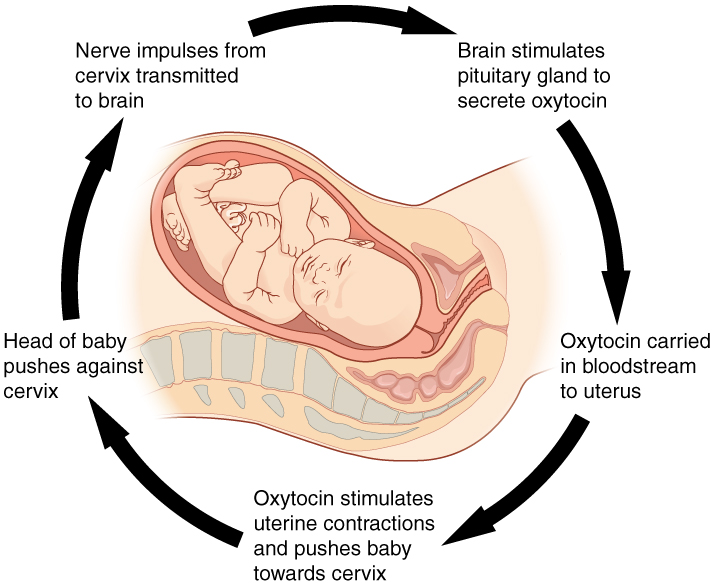Annika Tekumulla
Haseung Jun
AP Biology 🧬
358 resourcesSee Units
Homeostasis & Feedback Loops
Based upon the environment around the organism, the timing, and coordination, there can be either a positive or negative feedback. Organisms use feedback to maintain homeostasis as well as respond to the environment. Homeostasis is an important topic that College Board likes to focus on, so it's important to be able to explain any positive or negative feedback loops off the top of your head. In this guide, we'll be looking at an example of each.
❎ Negative Feedback Loops
Negative feedback loops are the response of reactions and leads to a decrease in those reactions. Negative loops also maintain homeostasis by creating optimal internal environments. Negative loops are also able to return a system back to target homeostasis.
An example of negative feedback loops is blood sugar regulation. When you eat food, blood glucose level rises from the sugar you just ate. The pancreas has a sensor attached to it in the blood stream, so when glucose level rises, it senses the increase. It in turn releases insulin into the blood. Insulin travels through the bloodstream and signals the liver that there is too much glucose in the blood stream. The liver then takes the glucose and stores it as glycogen (long chain of sugar). Then, blood glucose level declines, brining it back to the regular sugar level allowed by the body.
But what if your body is low on glucose level? This could cause problems too, so the body will respond to this stimulus. This time, the pancreas will sense the change again and release glucagon into the blood. Glucagon will travel through the blood stream and signal the liver that the blood sugar level is low. The liver will break down the stored glycogen back into glucose and release it into the blood stream. As a result, blood glucose level rises, brining the body back to the regular sugar level.
Image courtesy of Lumen Learning.
Diabetes would disrupt the negative feedback loop of blood sugar regulation. Diabetes is a condition that can be caused by an imbalance of insulin. There can be either too little insulin or a resistance to insulin. With Type I diabetes, the body does not produce enough insulin. This can simply be fixed by taking extra insulin after meals. This way, even if the pancreas doesn't create enough insulin, there will be enough insulin to signal the liver.
Type II diabetes is a little more problematic. In Type II diabetes, the liver is essentially doesn't recognize insulin. So even if you ate a ton of insulin, your liver wouldn't recognize it and in turn wouldn't take glucose and store it as glycogen. This is why Type II diabetes are harder to manage, because there isn't a clear solution to the problem. When there is a problem in the negative feedback loop, it can lead to high blood glucose levels that can lead to adverse health effects.
✅ Positive Feedback Loops
Positive feedback loops are used to increase the change in the cell by amplifying or speeding up the process. Positive feedback loops can also be called “snowballing” effects. It is also important to remember that without a stop or counterbalance, the positive feedback loop can not be controlled.
An example of a positive feedback loop is childbirth. During labor, a chemical called oxytocin is released. Labor is a positive feedback loop because oxytocin causes a response for contractions to intensify and occur quicker. Oxytocin is released into the bloodstream and it stimulates contractions. When the head of the baby pushes against the cervix, the brain receives signals, which stimulates the pituitary gland to secrete oxytocin. More oxytocin leads to more frequent contractions, and the loop keeps going. After the birth, the loop is interrupted, stretching and contractions end, and the loop is finished.

Image courtesy of BCcampus.
Ending Notes
Negative and positive feedback loops are extremely important because it regulates the body. Homeostasis is the body's way of trying to keep it from changing to any extremes, so negative feedback loops come into play with homeostasis. Positive feedback loops are important when more of this needs to create more of that.
Browse Study Guides By Unit
🧪Unit 1 – Chemistry of Life
🧬Unit 2 – Cell Structure & Function
🔋Unit 3 – Cellular Energetics
🦠Unit 4 – Cell Communication & Cell Cycle
👪Unit 5 – Heredity
👻Unit 6 – Gene Expression & Regulation
🦍Unit 7 – Natural Selection
🌲Unit 8 – Ecology
👏General Review
🧐Multiple Choice Questions (MCQ)
✍️Free Response Questions (FRQ)
📆Big Reviews: Finals & Exam Prep

Fiveable
Resources
© 2023 Fiveable Inc. All rights reserved.